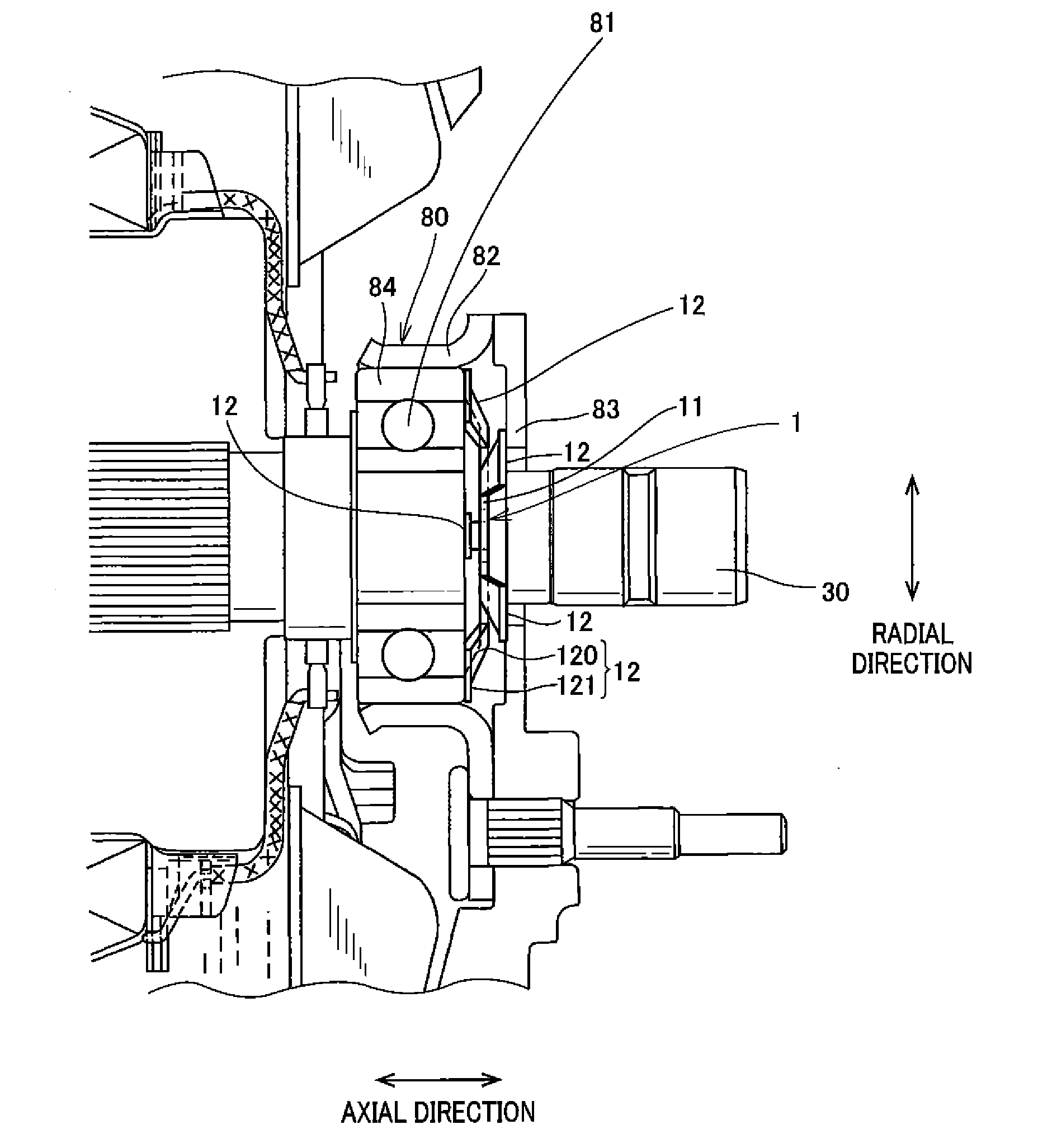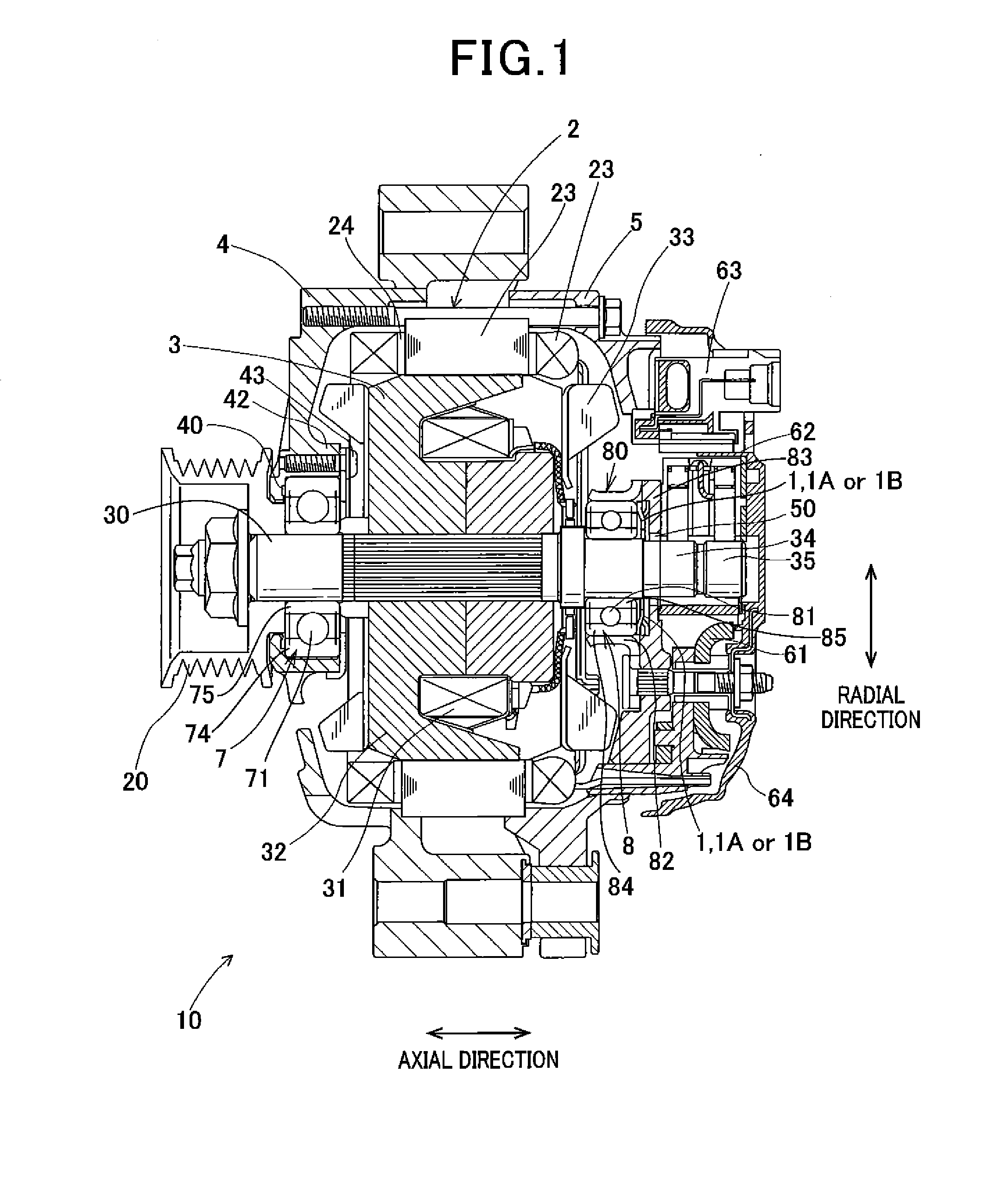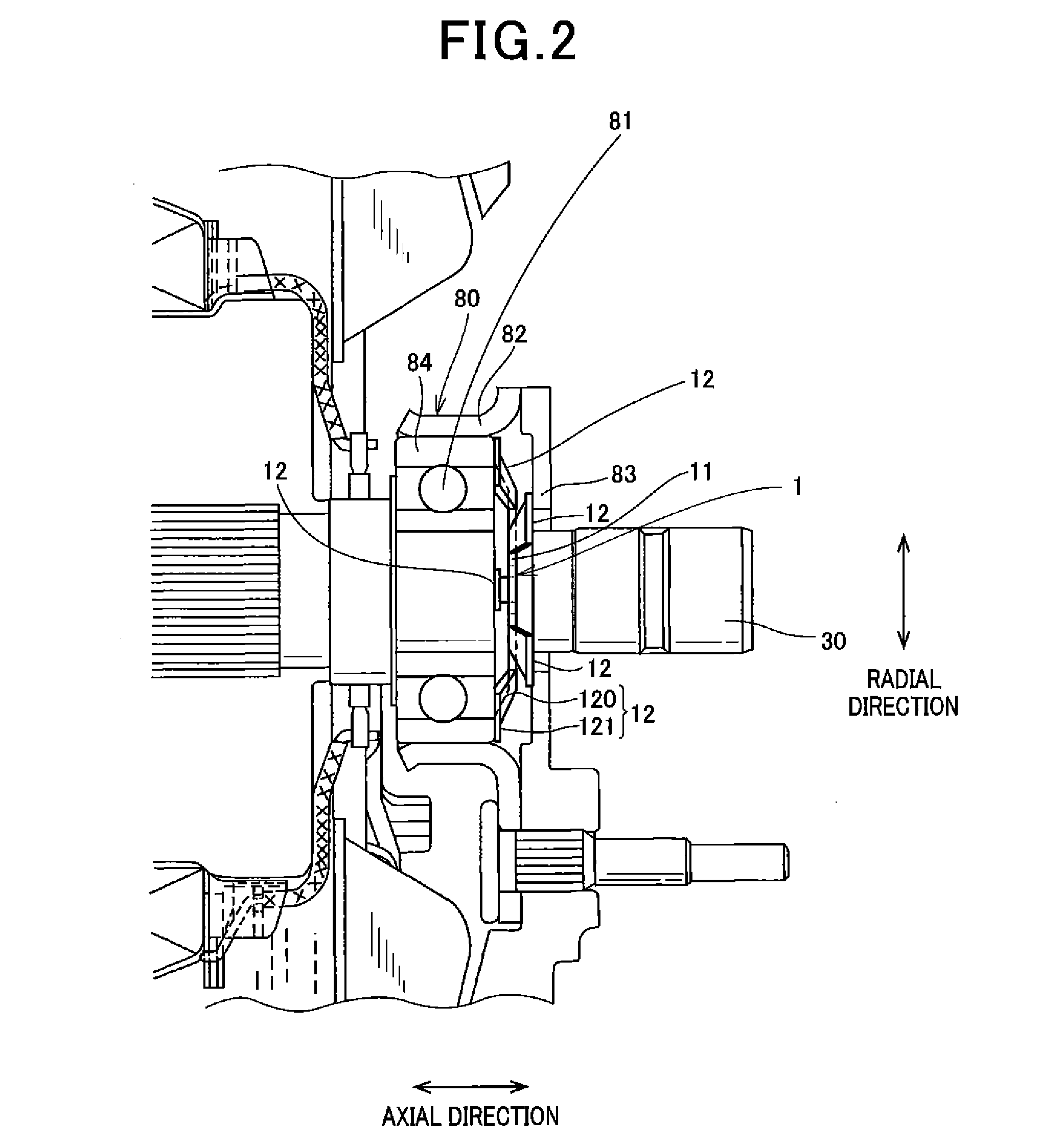Alternator for automobile having washer between housing and outer race of bearing
a technology of outer race and washer, which is applied in the direction of shaft and bearing, rotary bearing, spring/damper, etc., can solve the problems of complicated steps for separating washers from one another, and achieve the effect of easy separation and easy production
- Summary
- Abstract
- Description
- Claims
- Application Information
AI Technical Summary
Benefits of technology
Problems solved by technology
Method used
Image
Examples
first embodiment
[0028]FIG. 1 is a view, partially in cross section, showing the structure of an alternator 10 of an automobile according to the first embodiment. The alternator 10 is driven by a rotational torque, generated in an engine of the automobile and transmitted through a belt, to charge an accumulator battery mounted on the automobile and to supply electric power to electric consumers mounted on the automobile.
[0029]As shown in FIG. 1, the alternator 10 has a stator 2 formed in a cylindrical shape, a rotor 3, and a housing composed of a drive end frame (hereinafter, called a front frame) 4 and a rear end frame (hereinafter, called a rear frame) 5. Each of the frames 4 and 5 is made of aluminium alloy and is formed in a cup shape. The frames 4 and 5 are attached to each other through the stator 2 such that open spaces of the frames face each other. A rectifier 61, a brush apparatus 62 and a voltage adjusting apparatus 63 are located on the rear side of a rear side wall of the frame 5 and ar...
second embodiment
[0052]In this embodiment, a washer 1A integrally formed almost in a double-ring shape is located as the biasing member in a space between the rear bearing 81 and the side wall surface 83 of the rear frame 5 so as to be in contact with both the outer race 84 of the bearing 81 and the side wall surface 83.
[0053]FIG. 4A is a front view of the washer 1A according to the second embodiment, while FIG. 4B is a side view of the washer 1A seen from a direction of an arrow shown in FIG. 4A. As shown in FIG. 4A and FIG. 4B, the washer 1A has the base portion 11 formed flatly and a plurality of spring portions 12A extending from the outer circumferential end of the base portion 11 toward the outside along the radial direction of the base portion 11. The washer 1A has at least three spring portions 12A separately located. For example, the washer 1A has three spring portions 12A arranged at equal intervals along the circumferential direction.
[0054]Each spring portion 12A is composed of a connecti...
third embodiment
[0064]In this embodiment, a washer 1B integrally formed almost in a double-ring shape is located as the biasing member in a space between the rear bearing 81 and the side wall surface 83 of the rear frame 5 so as to be in contact with both the outer race 84 of the bearing 81 and the side wall surface 83.
[0065]FIG. 5A is a front view of the washer 1B according to the third embodiment, while FIG. 5B is a side view of the washer 1B seen from a direction of an arrow shown in FIG. 5A. As shown in FIG. 5A and FIG. 5B, the washer 1B has the ring-shaped base portion 11 and a plurality of spring portions 12B. The shape and size of the washer 1B projected on the plane in which the base portion 11 exists are the same as the projected shape and size of the washer 1A. Each spring portion 12B is composed of a connection portion 124 extending from the base portion 11 in the same plane as that of the base portion 11 in the same manner as the connection portion 122 shown in FIG. 4A, first and second...
PUM
 Login to View More
Login to View More Abstract
Description
Claims
Application Information
 Login to View More
Login to View More - R&D
- Intellectual Property
- Life Sciences
- Materials
- Tech Scout
- Unparalleled Data Quality
- Higher Quality Content
- 60% Fewer Hallucinations
Browse by: Latest US Patents, China's latest patents, Technical Efficacy Thesaurus, Application Domain, Technology Topic, Popular Technical Reports.
© 2025 PatSnap. All rights reserved.Legal|Privacy policy|Modern Slavery Act Transparency Statement|Sitemap|About US| Contact US: help@patsnap.com



